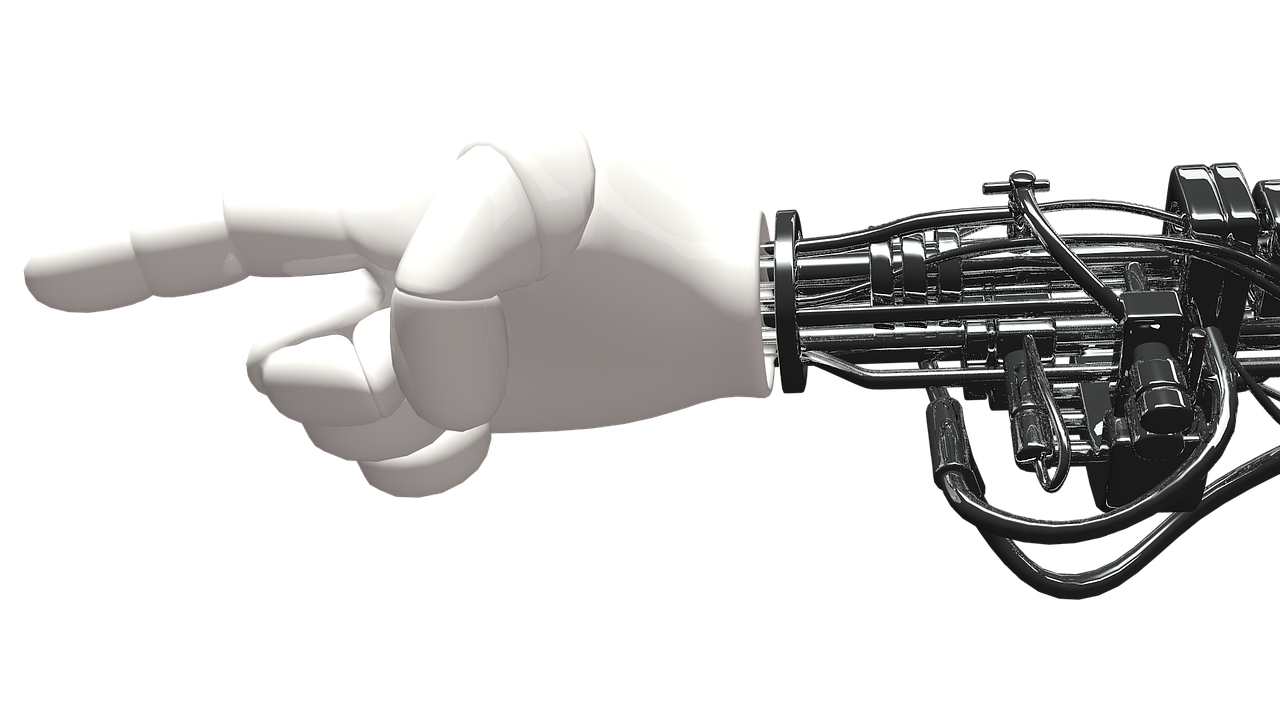What about the robotics?
Interview with
Scientists have made huge advances in robotics. Prime examples are key hole  surgey and the self checkouts in supermarkets. But when it comes to making automous robots that can walk about, it's proving to be rather tricky. Graihagh Jackson went to dinner with Philip and Rachel Garsed to find out why...
surgey and the self checkouts in supermarkets. But when it comes to making automous robots that can walk about, it's proving to be rather tricky. Graihagh Jackson went to dinner with Philip and Rachel Garsed to find out why...
Phillip - I'm Philip Garsed and I design electronics for large physics experiments.
Rachel - I'm Rachel Garsed and I'm an electrical engineer at Cambridge Medical Robotics.
Graihagh - And of course, what comes after dinner? Cupcakes! Except, they weren't decorated and during the main course, Rachel conveniently turned into a robot to show me just how difficult it is to programme a cyborg to do a simple task, yet alone become entirely autonomous in the larger world.
Philip - We've got here Rachel, our friendly robot and what we're going to do is programme her and it's a bit like programming a computer but, in this case, she's going to do some physical tasks and Rachel knows a few commands that we can give her. So firstly, she knows about things, objects...
Rachel - I know the difference between sprinkles, cake and buttons.
Philip - We have to construct a programme from the different things that the robot understands to do the right sequence of things to get what we want to happen.
Graihagh - So we give it a series of commands?
Philip - Exactly. It's almost like having your own recipe. You have to do everything in the right order otherwise you get some horrible disaster.
Graihagh - So what commands do you understand, Rachel?
Rachel - I understand pick up, put down, unload and rotate. Oh, and also stop.
Graihagh - Okay, let's take it way. Let's see how I do - I'm feeling pretty confident.
Philip - Okay....
Graihagh - You've made me (Blue Peter Style), here's one you made earlier. So it's got four chocolate buttons on, a series of sprinkles and icing and that's what I'm going for.
Graihagh - Pick up sprinkles...
Philip - So that worked quite well. She's holding the sprinkles...
Graihagh - Unload sprinkles onto cake... Stop, stop, stop, stop!
Philip - That didn't quite go to plan did it? So you've stopped the robot but, currently, there are sprinkles absolutely everywhere. So what do you think went wrong there?
Graihagh - I didn't specify how long to unload for...?
Philip - Exactly. We have no way of telling the robot, at this stage, when to stop. It doesn't know how many sprinkles are too many. What we can do is specify a time, I'll get another cake...
Graihagh - I not we we're going to have any sprinkles left by the end of this...
Rachel - We've bought extra - we've brought more...
Graihagh - Okay so we're going to start again from the beginning. Pick up sprinkles... Unload onto cake for one second... Put down...
Philip - Job one complete.
Graihagh - Better?
Philip - That's better but did you see how unexpectedly it went wrong and you didn't even have a clue that it was about to go wrong.
Graihagh - No, I suppose it's just that common sense in me that would expect to not to pour that many sprinkles.
Philip - Robots have no common sense - we have to programme it.
Graihagh - Pick up buttons... Oh...
Philip - Right - you've got about a hundred there. Is that as many as you wanted?
Graihagh - I need four but probably one at a time I should imagine. Put down - Rachel... Pick up one button... Unload on cake... Winning...
Philip - Right, exactly. But do you remember before how we we able to tell the robot to do something for a certain amount of time or for a certain condition? You'll notice here that we're doing the same thing many, many times so this is actually where robots start to come into their own. Because we can say for four buttons - pick up one button, unload button onto cake, rotate cake and because it then knows that that's got to happen four times, it will then do it for button number two, button number three, and button number four.
Graihagh - I went wrong at every single instruction, pretty much. I poured sprinkles everywhere, I stacked chocolate buttons on top of each other and this is still what I would consider a really simple task...
Philip - And yet, Rachel pretending to be a robot is about as sophisticated as we could get because we're really still using her human intelligence. She knows how to pick up a tube of sprinkles without crushing it and all these little things, she can identify exactly where the cake really is and, in reality, robots are much more limited than that. It shows you how versatile humans are and really how much you have to limit the problem if you're trying to interact a robot with the outside world.
- Previous Should we take AI seriously?
- Next Will robots take over the world?









Comments
Add a comment